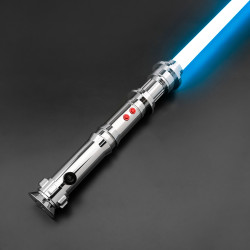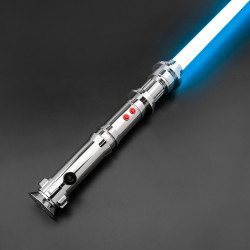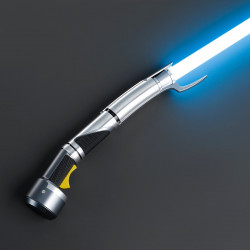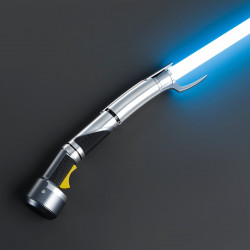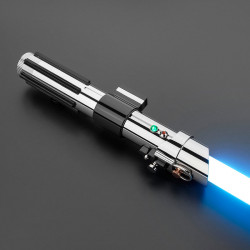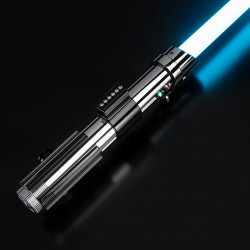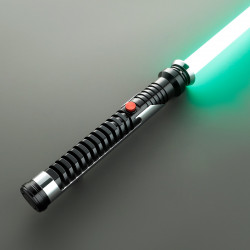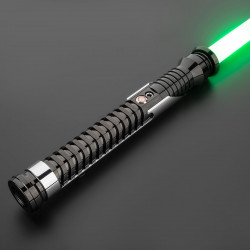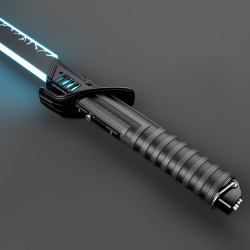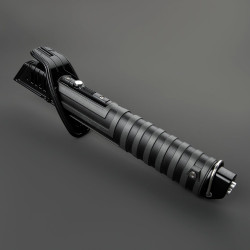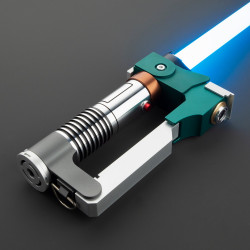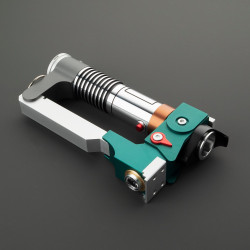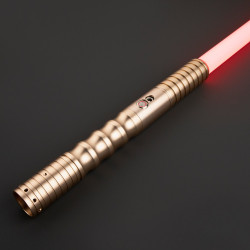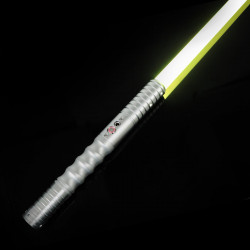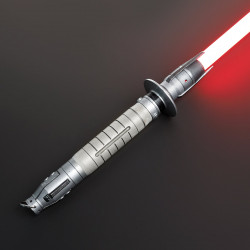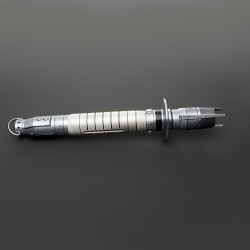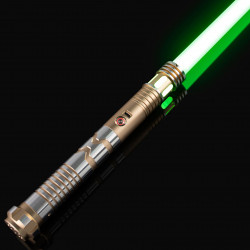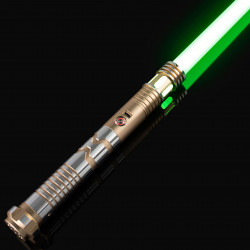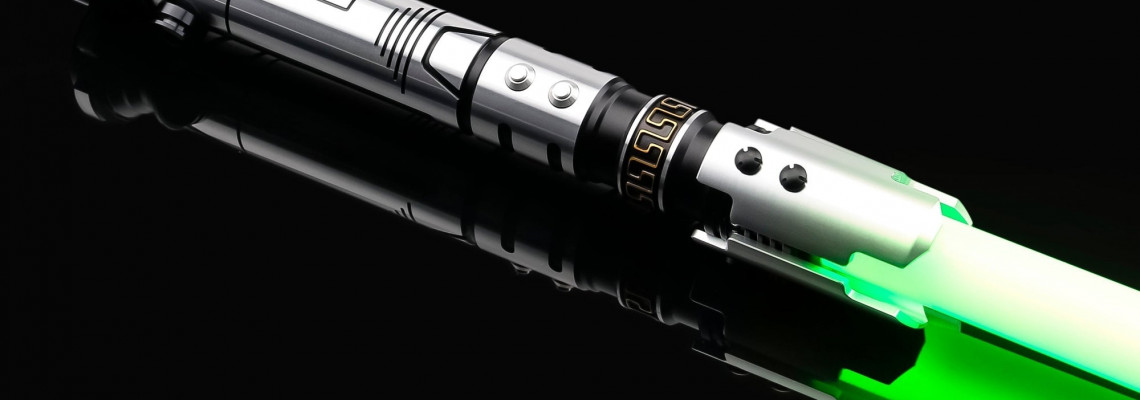
Lightsaber Fighting Styles
Possessing a light sword is one thing, but it won't mean much if the person using it lacks the necessary abilities. All Jedi and Sith have received training on how to wield these weapons effectively. The value of being able to wield a light sword was recognized even by people who prioritized diplomacy and amicable discussions. All forms of lightsaber warfare, including those that have grown obsolete over time, are taught by a group known as the Sabre Legion.
Forms of Lightsaber Combat
Form I: Shi-Cho
Every Jedi or Sith recognizes all seven types of lightsaber fighting. The earliest and most fundamental light-saber kind of fighting is called Form I or Shi-Cho. Because it was created so early on, it emphasizes using the lightsaber defensively rather than engaging in lightsaber-against-lightsaber combat. The younglings learn it as a prelude to fighting. Shi-Cho is frequently used by combatants when all other options for fighting have been exhausted.
Form II: Makashi
The rise of the Dark Jedi and Sith Lords led to the dominance of Form II, commonly referred to as the Contention Form and dubbed Makashi. Form I was rendered obsolete by the sudden proliferation of lightsabers, necessitating the development of new tactics by warriors. Form II outperforms opponents with sophisticated footwork and exquisite skills, demonstrating grace and balance. Because this method only requires one hand, practitioners can typically disable their opponent without using lethal Force Force.
Form III: Sores
The Makashi fighting form (Form II) became obsolete as blaster use increased, and interplanetary conflict introduced a wider variety of weapons that Jedi and Sith had to protect themselves against. Jedi still employ Shia-Cho, although Makashi was replaced by Form III, sometimes known as the Way of the Minonk or Sores. Because it is more defensive than offensive, sores is arguably the most robust weaponry. Obi-Wan Kenobi was an expert in this form, blocking twenty attacks of any kind each second. On Endor, Luke Skywalker also displayed this skill when he defended himself against several Scout Troopers.
Form IV: Attar
Form IV evolved as both the Jedi and the Sith gained more excellent Force-connection capabilities. During the Mandalorian Wars, this form—also known as the Aggression Form or Attar—emerged. It grew throughout the Old Republic and eventually became the most popular light-saber fighting technique. Aggressive by nature, Attar swiftly won the Sith's favor. Attar, the most kinetically active form, with the exception of Form VII (covered below), depends on the fighter's Force connection to help with acrobatic maneuvers. This technique is best suited for one-on-one light-saber fighting and emphasizes strength, speed, agility, and the integration of offensive and defensive maneuvers with acrobatics. In Revenge of the Sith, Yoda fights Darth Sidious in this manner. Before the collapse of the Old Republic, Yoda and Qui-Gon were both highly proficient in Attar.
This method is not appropriate for beginners because it requires a solid hold of the Force Force to allow it to flow through the practitioner.
Form V: Shien & Djem So
Form V, also known as Djem So, is the following form, which developed from Form III. It is a technique that gives the practitioner the ability to defend himself and make aggressive motions. Shien is a technique for thwarting distant attacks, including those from blasters and other ranged weapons. It is the classical variation of Form V. Its companion, Djemal So, was created specifically for light-saber-to-light-saber combat. Because Form V employs fewer acrobatics than some other techniques, practitioners frequently preferred it.
Even though the two sections of Form V have different goals, they are both based on the same fundamental idea: counterattacking by utilizing the opponent's attacks against you. This approach is compelling and efficient since it can be used to deflect ranged strikes back at foes (the attacker or another adversary) or to turn blocks into strikes by utilizing the momentum of the enemy. Both Jedi and Sith enjoyed it, although some Jedi questioned its application because they believed the high degree of hostility went against the Jedi Way's tenets.
Form VI: Neman
Several of the earlier forms evolved into Form VI, often known as the Way of Rancor or Neman. Form VI did not have a distinctive fighting form per se; instead, it was an effective group of forms that integrated several strategies. It also lacked a predictable characteristic weakness because of its versatility. It is typically taught to students of this type in conjunction with Force-based fighting.
Form VII: Judo (or Vaped)
The final known formal style of lightsaber battle is Form VII, the seventh and final form, which is referred to as either Judo or Vaped. The most famous practitioner of this method is Jedi Master Mace Windu. He had the advantage over Darth Sidious because of this form. Instead of killing an unarmed enemy, Windu spared Sidious' life when he was disarmed. The villain was able to get away because of this mercy. Windu's death was not a result of his inability to battle but instead of his unwavering devotion to the Jedi Way, which led him to risk his life rather than stray from it.
Combining Fighting Styles
Although the explanations above generally suggest that these types are distinct from one another, there is overlap. An experienced observer may clearly distinguish each style when viewed as a whole, albeit multiple styles may use the same technique. In a particular battle, a practitioner may also use various styles, alternating between them according to the specific terrain, the opponent, or other circumstances. Unlike the Sith, who from the start choose aggressiveness, many Jedi are educated to prioritize a defensive attitude. Jedi will thus think about whatever style will cause the least amount of death, but their Dark Side opponents may think about the exact opposite.
